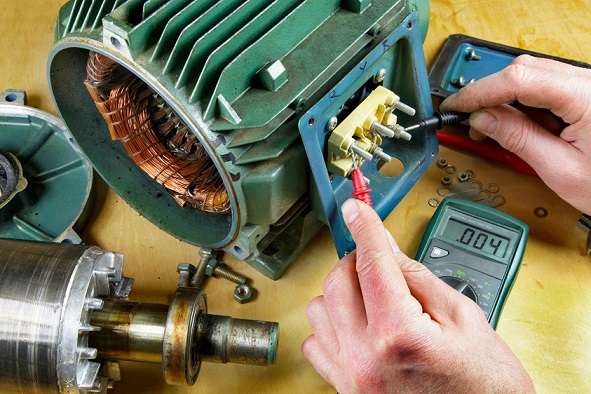The SURGE test was introduced in the USA as a systematic in-production test in the early 1950s and conducted for the first time in Europe by Risatti in 1958, which has constantly evolved and perfected it. It is the safest, most effective and non-destructive proof to verify the quality of the windings without incurring in side effects (wrapping failure, etc.).
SURGE test
What is SURGE test
Standards associated with this test
The list of standards available by using our equipments.
IEC EN 60034-15
IEEE Std. 522-2004
IEC EN 60034-1
Not sure which standard to refer to?
SURGE test: a fundamental test
The Surge test consists of our advanced static SCR system with protection circuit.
Tolerances can be set separately to detect and verify errors related to:
- impedance L (indicator of number of wrong coils, wrong connections, reverse windings, iron variances, etc.)
- quality factor Q (indicator of short-circuited coils, short-circuited skeins, etc.)
In addition, in order to ensure a thorough and accurate check, the equipment monitor always displays the sample curve and the tested curve superimposed thereto to analyze the type and extent of the defect.
The SURGE test is very important as 80% of all electrical faults in products begin with a slight insulation defect between coils and between reels and pack (ground).
It also allows detecting a high number of defects on any electrical winding, whether they are present at the time of the test or still in the latent state. In particular:
- Winding insulation quality defects (incisions, cracks, leaks, etc.) that do not initially lead to the malfunction of the object. These defects increase during the operation of the object, lead to winding erosion and to short circuits, with complete object failure. A particular reference for this case are the Short Circuit Coils, which cannot be detected with other measurement systems
- Wrong number of coils, whether too low or too high, with sensitivity higher than even an LCR bridge.
- Dispersions between reels and between coils and towards the outside (micro-discharges, also known as P. D. (partial discharges))
- Short circuit on a coil, between coils (stators), between coils and iron
- Unbalance between the coils of phases (stators)
- Copper of different diameter between phases
- Reversed and/or interrupted coils
- Iron quality or short circuit between laminations
- Micro-discharges, also called Partial Discharges (P. D.). Caused by local insulation leaks, internally and between coils, towards the pack and towards the outside (in this case, we speak of the Corona discharge) which are not detectable under normal product operation as they do not significantly alter current absorption. Micro-discharges lead to progressive damage to the product
The SURGE test is the most reliable method to test the insulation of winding systems and can also be used to test partial discharges. It is the most significant non-destructive test that can be performed for the determination of faults, malfunctions and deterioration phenomena on windings.
The result of the SURGE test provides:
- The measured inductance value
- The value of the quality factor detected
- The output of the acquired waveform on the monitor, directly comparable by the superposition of a sample curve, with the possibility of choosing among 3 different methods of analysis of the SURGE test
News
Some in-depth articles from the Risatti’s world.
Some fields of application
of our equipments
Our machinery can be used in various sectors.
Find out how and why our customized solutions could be right for you.
We are here to help you
Write to us. We’ll contact you as soon as possible!





